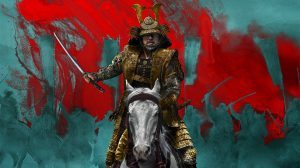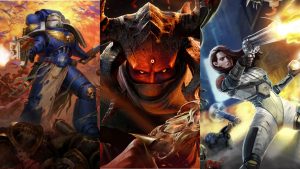
Released for the Nintendo 64 in 1998, Ocarina of Time did more than bring The Legend of Zelda into a literal new dimension. It was a full realization of what a more immersive Legend of Zelda title could be while leaning into darker tones and subject matter than its predecessors. However, Ocarina of Time’s enormous success proved to become something of a double-edged sword creatively for the franchise moving forward. It redefined The Legend of Zelda for both the fans and subsequent creative teams somewhat restrictively.
Here’s how Ocarina of Time elevated the Legend of Zelda franchise to new heights, how it influenced the franchise for over a decade, and how Zelda eventually found a way to finally, and successfully, work its out from under the shadow of the 1998 game and effectively redefine itself once again to renewed popularity and relevance.
The Long Road to Ocarina of Time
Ocarina of Time underwent a lengthy development process. While it was developed alongside Super Mario 64 and Mario Kart 64., it was released two years later than those N64 launch titles. Originally intended to run on the same gameplay engine as Super Mario 64, with its more cartoonish animation style, Ocarina of Time‘s development deviated from the capabilities of that engine as the project took on its own mechanics and personality. Nintendo gave the development team additional time to fine-tune the myriad of elements in the game, from the 3D designs and ambitious sound design to the ability to switch to a first-person perspective and functionality with the N64’s Rumble Pak peripheral.
This breadth of features and innovations was universally well-received upon Ocarina of Time‘s launch. It was a true showcase of what the N64 and 3D gaming were capable of. Backed by a $10 million marketing campaign, Ocarina of Time set a new record for pre-orders at the time, with over 500,000 copies pre-ordered in the North American market alone. This translated into Ocarina of Time becoming the best-selling game in North America in 1998, despite being released so late in the year. Ocarina of Time went on to sell 7.6 million copies worldwide, the fourth best-selling title overall for the N64 in the console’s lifetime.
A Shadow on Majora’s Mask
Nintendo understandably wanted to maintain the momentum for The Legend of Zelda while the figurative iron was still hot and fresh in the minds of gamers around the globe. Plans for an enhanced edition of the game (which would remix existing features and add new content) were planned for the N64’s disk drive peripheral, the Nintendo 64DD. Though these plans were eventually shelved with the N64DD’s failure to connect with gamers in Japan, this development led to the creation of a direct sequel to Ocarina of Time (a rarity for a franchise largely comprised of standalone installments) with 2000’s The Legend of Zelda: Majora’s Mask.
Majora’s Mask has naturally always been compared to Ocarina of Time. It was, after all, a sequel to that game, the first home console Zelda game released after Ocarina of Time, and the only other Zelda game ever released for the N64. Yet, another major factor in this comparison is that, because of the rushed development window, Majora’s Mask reuses a lot of the same assets from Ocarina of Time. Those reused assets are most visible in the character designs. This is explained away as Link traveling to Termina, an alternate version of Hyrule but, for all intents and purposes, the characters Link encounters in Majora’s Mask are meant to be new ones.
Like Ocarina of Time, Majora’s Mask was met with critical acclaim and was a commercial success. However, it was not as warmly received as its predecessor. Given their constraints, the development team opted to go deeper and darker with the game’s scope rather than try to recreate the more sweeping Ocarina of Time. That game presented players with an epic battle between good and evil across a seven-year time jump and nine full dungeons. Majora’s Mask only featured five dungeons, including the Moon, with players revisiting the same areas and events with the game’s central three-day time loop premise.
A solid game in its own right, Majora’s Mask falls awkwardly into a space of having too much of its personality and presentation echoing Ocarina of Time instead of independently forging its own voice. This problem would effectively continue to haunt Majora’s Mask when it received a remake on the Nintendo 3DS in 2015, two years after Ocarina of Time received its own 3D remake on the handheld console. Though a set of separate remakes which were released 15 years after those first impressions, there was still a popular perception that Majora’s Mask fell short of Ocarina of Time on the 3DS. It effectively cemented the popular perception that Majora’s Mask lived in the shadow of its older, more successful sibling.
As for the Ocarina of Time N64 DD project, it was revived for the GameCube several years later and ported to the console as The Legend of Zelda: Ocarina of Time – Master Quest in 2002. The enhanced remaster not only subtly upgraded the technical presentation for the more advanced hardware, but included an alternate game mode, the Master Quest, which increased the difficulty and remixed the game’s puzzles and dungeon layout. Critically lauded, Master Quest was released the same year as The Legend of Zelda: The Wind Waker on the GameCube, practically demanding direct comparison from a franchise rediscovering its identity.
The Wind Waker and Burden of Expectations
When the GameCube was unveiled at the 2000 Nintendo Space World exposition, a technical presentation showcasing the console’s significantly improved graphical capabilities included a sequence of Link fighting Ganondorf in a darkened castle. While fans were excited that this demo suggested the tonal successor to Ocarina of Time was in the works, Nintendo wasn’t particularly interested in pursuing the darker fantasy stylings it had during the N64 era. Instead, 2002’s The Legend of Zelda: The Wind Waker featured a cartoonish, cel-shaded animation style, offering a more family-friendly tone without compromising on the depth or quality of gameplay.
The Wind Waker was officially unveiled at the following Nintendo Space World in 2001, with fans shocked by the drastic change in visual sensibilities from what they had seen at the same expo the year prior. Nintendo was surprised by the backlash and withheld further details about the game until they could share a working demo, hoping the intuitive gameplay would outweigh any superficial concerns about its presentation. Though the game was successfully received, the acclaim was not at the same level as Ocarina of Time, with most of the positive reviews continuing to cite the change in visual aesthetics more as a hindrance than a strength.
Sales were similarly weaker, with The Wind Waker selling a relatively impressive 4.6 million copies during the GameCube’s lifetime: significantly less than Ocarina of Time N64 sales. Fortunately, time has been kind to The Wind Waker, with the game gaining an increasingly favorable reception over time, culminating in the game being remade for the Wii U in 2013 as The Legend of Zelda: The Wind Waker HD. However, because of the initial diminished response, Nintendo would look back to the example set by Ocarina of Time as it began development on a follow-up to the original GameCube release.
Twilight Princess, the Spiritual Successor
Though Nintendo initially planned a sequel to The Wind Waker for the GameCube, the middling reception in North America led Eiji Aonuma, who had directed Legend of Zelda games since Ocarina of Time, to decide to return to a darker, more realistic presentation for a separate follow-up. This concept of going darker was reflected narratively, with Link traveling between his home dimension and the Twilight Realm over the course of his adventure. As development expanded to include developing a version for the Wii for its 2006 launch, The Legend of Zelda: Twilight Princess further emphasized combat to take advantage of the console’s motion controls.
Twilight Princess plays like a moodier, more violent Ocarina of Time, eschewing the N64’s musical themes with ones focused on light and shadow. This more mature approach proved enormously successful, with Twilight Princess selling a combined total of 8.85 million copies on the GameCube and Wii, surpassing Ocarina of Time to become the best-selling Zelda game at that time. However, this resurgence only revived the specter of Ocarina of Time and its sensibilities with the franchise, as Nintendo struggled to forge forward once again.
Breaking Free
Nintendo’s home console follow-up to Twilight Princess, 2011’s The Legend of Zelda: Skyward Sword for the Wii, while critically acclaimed, sold less than four million copies worldwide (an even weaker commercial performance than The Wind Waker). In response, Aonuma and the development team at Nintendo took five years to create a follow-up, rethinking what The Legend of Zelda could be for modern audiences and what the core of the franchise truly was. This extended soul-searching led to the creation of The Legend of Zelda: Breath of the Wild, released in 2017 for the Wii U and the newly launched Nintendo Switch.
A truly open-world gameplay experience, Breath of the Wild threaded the tonal needle with a presentation style that certainly wasn’t childish but also wasn’t overly realistic and grounded. Breath of the Wild plays like a sandbox containing all the greatest features and innovations that The Legend of Zelda is known for, but in a fresh and new way that feels both modern and timeless in its execution. Unlike Twilight Princess, Breath of the Wild doesn’t feel like a spiritual successor to Ocarina of Time, but a complete reinvention of what The Legend of Zelda can be.
Enormously successful with critics and fans alike, Breath of the Wild is the game that really broke the franchise out from under the shadow of Ocarina of Time. It only took the series nearly 20 years to do it, but Breath of the Wild restored the relevance and luster to Zelda just as Ocarina of Time in the ‘90s, albeit in its own unique way. 25 years since Ocarina of Time’s launch, The Legend of Zelda no longer feels beholden to it, but its influence on the franchise is still a very fresh memory.
Developed and published by Nintendo, The Legend of Zelda: Ocarina of Time is available to play on Nintendo Switch Online, with the Expansion Pack premium subscription.
The post How Ocarina of Time’s Ghost Haunts the Legend of Zelda 25 Years Later appeared first on Den of Geek.






